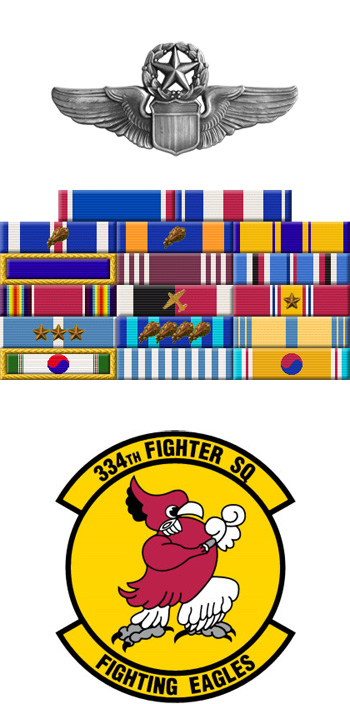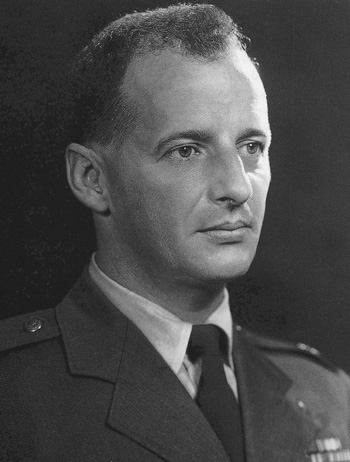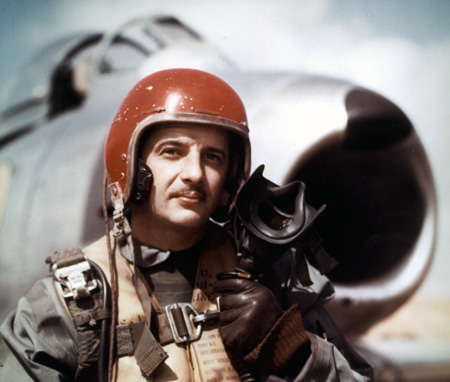
|
Manuel J. Fernandez, Jr. |
 |
|||
| Rank, Service | ||||
Major O-4, U.S. Air Force |
||||
| Veteran of: | ||||
|
||||
| Tribute: | ||||
Pete Fernandez was born on April 19, 1925, in Key West, Florida. He enlisted in the U.S. Army Air Corps on February 23, 1943, and entered the Aviation Cadet Program on November 5, 1943. He was commissioned a 2LT and awarded his pilot wings on November 20, 1944, and served as an instructor pilot in Midland, Texas, until January 1946. Fernandez next served with the 2112th Service Unit at San Jose, Guatemala, and then at Albrook Field, Panama, until November 1946. He transferred to the 23rd Fighter Squadron at Howard Field, Panama, in November 1946, and served with that unit until May 1949. During this time, his squadron deployed to Germany in support of the Berlin Airlift. He then served as an instructor pilot at Nellis AFB, Nevada, until July 1952, when he transferred to Randolph AFB, Texas. Fernandez next served with the 334th Fighter Interceptor Squadron of the 4th Fighter Interceptor Group in Korea from September 1952 to August 1953, where he was credited with destroying 14.5 enemy aircraft in aerial combat, making him the 3rd highest scoring American ace of the Korean War. He served with 9th Air Force at Pope AFB, North Carolina, from August to September 1953, and then served with a series of fighter squadrons at George AFB, California, from November 1953 to October 1956. During this time, he won the Bendix Trophy Race in August 1956. Maj Fernandez served at Edwards AFB, California, from October 1956 to April 1957, and then served as an Air Force Recruiter at Coral Gables, Florida, and then Robins AFB, Georgia, from April 1957 to January 1960. After attending Spanish Language School, he served as an Advisor to the Argentine Air Force at Buenos Aires, Argentina, from August 1960 until his retirement from the Air Force on July 1, 1963. After his retirement, Pete flew missions for the Central Intelligence Agency and later for the South Florida Drug Interdiction Task Force. He died in a plane crash on October 18, 1980, and was buried at Arlington National Cemetery. |
||||
|
||||


